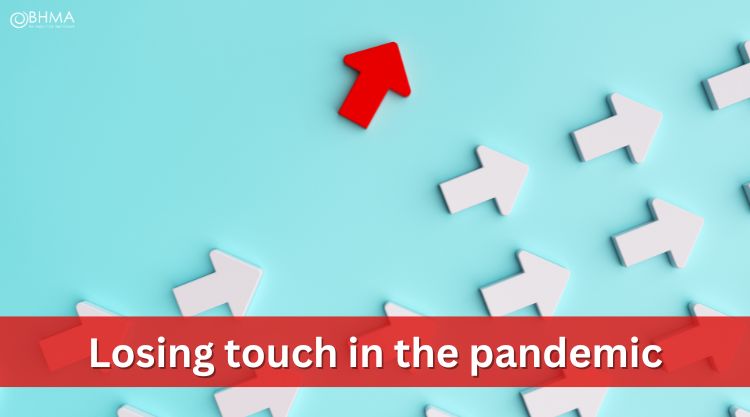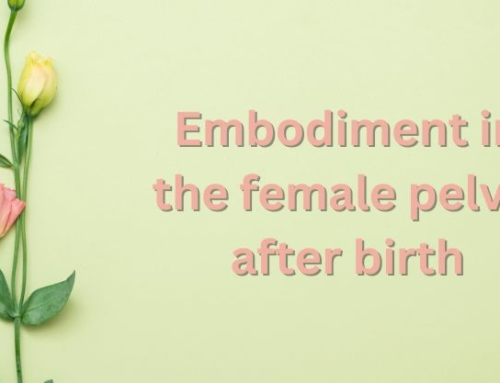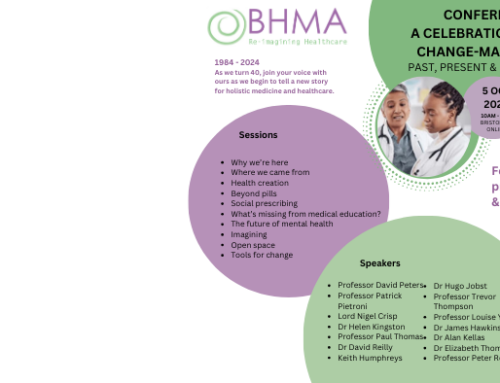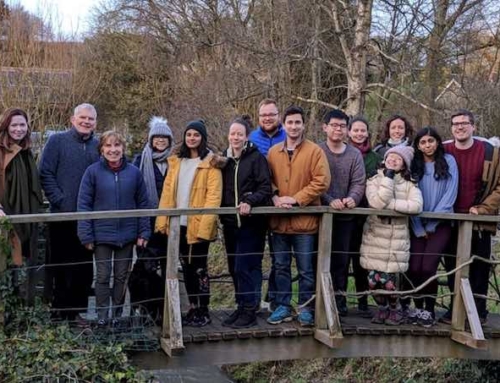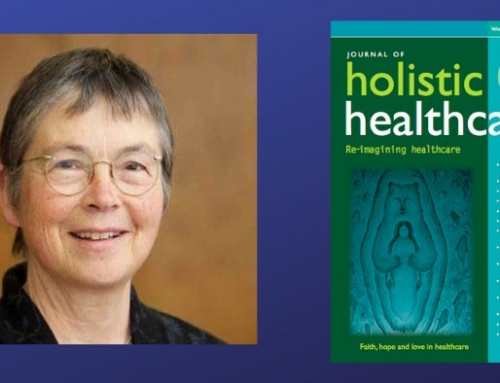Losing touch in the pandemic
Bella Eacott, Research manager, Performing Medicine
Published in JHH 19.2- Embodiment and bodywork
Touch is central to healthcare practice
When we visit a hospital or clinic we expect to be touched, by someone who is not our family member or friend. It may be what we most fear in these interactions (a painful procedure) or it may be what we look forward to (some soft tissue massage). The beneficial impacts of touch are multiple: slowing our heart rate, lowering blood pressure, reducing levels of cortisol, boosting immunity and serotonin levels and facilitating emotional connection, supporting pain relief. Fascinating recent research has also shown that we have touch receptors that specifically respond to certain qualities of touch – such as gentle stroking – supporting the idea that the quality of touch really makes a difference (Varlamov et al, 2020). Despite this centrality, touch is the subject of relatively little study within healthcare research (Kelly et al, 2018).
Speaking with many healthcare professionals in my role with performing medicine – an initiative providing arts-based education and training for healthcare professionals and students – we have been surprised to learn that from their perspective, touch is rarely explored in isolation, in education, theory, or practice. Of course palpation, examination, manual handling, or the use of medical instruments and technologies are all aspects of ‘procedural’ touch that are taught, and applied in daily practice. Equally widely used are ‘communicative’ or ‘expressive’ touch within all interpersonal interactions, but rather than being taught – or even mentioned – this type of touch is understood to be an instinctive, intuitive part of empathic care.
The Covid-19 pandemic
The pandemic and subsequent policy adaptations and restrictions have both shone a light on, and in some cases exacerbated, pre-existing injustices and challenges across society, from work security or insecurity, to systemic racism and access to health and social care. Within healthcare settings, social distancing, the use of personal protective equipment (PPE) and using video consultation technologies have also served to highlight features of healthcare that may not have been previously visible, shining a light in particular on the non-verbal aspects of healthcare practice. The ways that Covid-19 adaptations impact on non-verbal cues in healthcare are myriad and often cumulative. For instance, we have spoken to security guards in emergency medicine departments who have noticed that now they are wearing masks, the touch they are used to applying skilfully and effectively in de-escalation situations is interpreted as far more aggressive by the recipient, who can now not see their facial expressions. And while many of the activities involving touch in healthcare have of course remained as a necessary part of everyday healthcare practice, the pandemic has also forced decisions to be made about what is vital touch and what is not. When touch is restricted, what can we lose: hugs between colleagues, a reassuring hand when guiding a patient through a corridor? A recent article exploring touch during Covid-19 has argued that it is ‘back-stage’ touch – which happens outside of clinical activities, a hand on a shoulder as a GP guides a patient through a corridor, for instance – that has been most affected by the pandemic; as opposed to ‘front stage’ touch – that happens within the consultation, which still remains (Pype et al, 2021). However we must also acknowledge that many types of touch are occurring at once during ‘frontstage’ touch and these may be affected by Covid-19. For instance, while performing a procedural task like drawing blood, the phlebotomist will also be touching the patient and that touch will communicate something: care, control, empathy, reassurance (Cocksedge et al, 2013). And this communication will also be affected by other contextual factors such as wearing gloves or a mask, or the socially distanced greeting the patient received upon arrival. The quality of touch, though perhaps ‘complex and multi-layered’, is always important, and Covid-19 brought this to our attention (Kelly et al, 2018).
Trouble with the T-word
Healthcare education might prefer to break down touch into specific activities, using a variety of pseudonyms, but its importance to patient experiences and outcomes is hard to underplay (Pype et al, 2021; Singh and Leder, 2012). The pandemic’s explicit restrictions and the imperative to manage touch in healthcare could be seen as an opportunity to pay attention, to explore the qualities and roles of touch more deeply, and create intentional ways of addressing, adapting, developing flexibility around how we use it. There is often an assumption that touch skills cannot be learned or taught, as there was with communications skills more generally, until relatively recently. But there are educational needs around touch: learning to be explicit about what is touch and where it appears, why and how we use touch, and differences between disciplines, and what the risks are (Kelly et al, 2018). With that said, here are a few thoughts on some of aspects of touch worth considering, in relation to distance, intimacy, power and language.
Distance and intimacy
When we use the word ‘touch’ in our workshops, the room sometimes very subtly recoils. Why is the word ‘touch’ something that most healthcare professionals would shy away from? To understand this, I think we have to look at the longstanding tension between distance and intimacy in medicine. The ‘clinical gaze’ that Foucault describes was based on a history of empirical techniques of diagnosis and investigation: the medic as scientist, perceiving their objects (patients) from a third rather than a first person perspective, ideally using diagnostic or interventional technologies to stand in place of the clinician’s own body – overriding their subjective untrustworthiness. The clinician’s own body and subjectivity is unreliable, fallible, and so touch – relying so heavily on the clinician’s feelings – is not to be trusted. The low status of touch is clear when we use language like ‘touchy-feely’ to describe the arts, for instance; it is not thought of as robust or thorough. Instead, using an object or instrument to mediate between the clinician’s own subjectivity and the patient-as-object, creating an ‘absent touch’, is preferable (Singh and Leder, 2013). But even these objects – including the gloves so widely used during the pandemic – and their textures, materials, sensations, also have impacts on patient experiences and outcomes. Brilliantly, a few years ago a group of sex toy designers set out to redesign the speculum: an instrument that – considering its objective is to look inside vaginas – is horribly cold, uncomfortable, and cranky. They understood that the texture of this object – replacing cold metal with soft silicon – would of course have an impact on how it is experienced by people with vaginas, and that this would actually support the efficiency of the task that the object is trying to achieve, by making people more comfortable and relaxed.
Touch and power
The avoidance of the word ‘touch’ may also be due to its association with power dynamics, and status. These exist both within healthcare professions themselves – as we find in general nurses are more willing to talk about role of touch than doctors – but also between patients and providers. The directionality of the power dynamics in healthcare settings is so obvious it’s almost invisible: have you ever touched your nurse or doctor? Or do they just touch you? I think perhaps it is the absoluteness of the directionality of touch that stops it from being openly named: we obviously don’t want to associate other forms of touch that also have strong power dynamics – nonconsensual or abusive – with healthcare. Of course, clinicians themselves are actually also being touched while touching – they are inevitably affected by their interactions with patients. We describe being ‘touched’ by an interaction – as in being emotionally moved – and of course this metaphor is grounded in an understanding that physical touch can have this impact. But the widespread denial of this direction of touch – from patient to healthcare professional – in healthcare education and training in particular, is part of a wider culture which encourages disembodiment and the denial of healthcare professionals’ own needs and physicality. Perhaps this contributes to the high levels of burnout we see in the healthcare professions today. The truth is though, however much we use alternative language to disguise it, or avoid talking about it – touch is everywhere in healthcare. So much so that it is definitely worth thinking about more carefully.
Teaching touch
There are influential clinicians, such as Professor of Medicine at Stanford, Abraham Verghese, advocating for the continued importance of touch to healthcare practice. But we need not stop at simply maintaining the approaches to touch that already exist in healthcare education and practice, but also ask how we can improve on these, expand our understanding and physical vocabularies and really maximise the potentially very positive affects of touch in healthcare. One way to achieve this is by drawing on a whole range of somatic techniques and arts practices.
Performing Medicine recently started two new research projects, funded by the British Academy and the Arts and Humanities Research Council, to explore different ways that the pandemic affected healthcare professionals’ non-verbal communication, and ways that arts-based approaches can address these. It’s always difficult finding words for explicitly non-verbal experiences like touch. However, in many movement, dance, or somatic practices such as yoga, Feldenkrais or contact improvisation, there is nuanced appreciation of the different qualities of touch: non-intentional, intentional, neutral touch. Working with artists and practitioners from these fields, we can bring some of these ideas into healthcare settings as a way to explore touch outside of its immediate ‘procedural’ or ‘task-based’ clinical applications.
In our workshops we encourage healthcare professionals to first get ‘in touch’ with themselves, which we see as the starting point for both self-care and for communication with colleagues and patients alike: knowing about your own physicality and emotional state will have an impact on how you then communicate non verbally and impact on those around you. A body scan exercise – in which healthcare staff will scan their body from their heads to their toes – can help staff to notice where they hold tension. By then moving or touching parts of their bodies – placing a hand to a furrowed brow, for instance to ask ‘am I frowning?’ – we develop self-awareness which we can then consider when interacting with others. We also do exercises which practice ways of touching: working in pairs to move someone’s arm in different ways, with different levels of pressure, speeds, or intentions, to understanding the varied responses that these ways of touching, moving, or rolling may elicit. In this exploratory space it becomes very clear to participants the differences between ‘having something done to you’, rather than with you, or for you. These kinds of exploration take time, however, and lend support to the argument that there needs to be more space in medical and nursing training and education to explore ideas around non-verbal cues and touch, before immediately applying them to clinical scenarios.
References
Cocksedge S, George B, Renwick S, Chew-Graham CA (2013) Touch in primary care consultations: qualitative investigation of doctors’ and patients’ perceptions. British Journal of General Practice 63(609) e283-e290, https://doi.org/10.3399/bjgp13X665251.
Kelly MA, Nixon L, McClurg C, Scherpbier A, King N & Dornan T (2018) Experience of touch in health care: a meta-ethnography across the health care professions. Qualitative Health Research 28(2) 200–212. https://doi.org/10.1177/1049732317707726.
Pype P, Pype K, Rowlands A, George R & Devisch I (2021) COVID-19 and touch in medical encounters. Patient education and counseling 104(3): 464–466. https://doi.org/10.1016/j.pec.2020.10.023.
Singh C & Leder D (2012) Touch in the consultation. British Journal of General Practice 62(596):147–148. https://doi.org/10.3399/bjgp12X630133.
Varlamov AA, Portnova G & McGlone F (2020) The C-tactile system and the neurobiological mechanisms of ‘affective’ tactile perception: the history of discoveries and the current state of research. Neuroscience and Behavioral Physiology 50, 418–427. https://doi.org/10.1007/s11055-020-00916-z.

